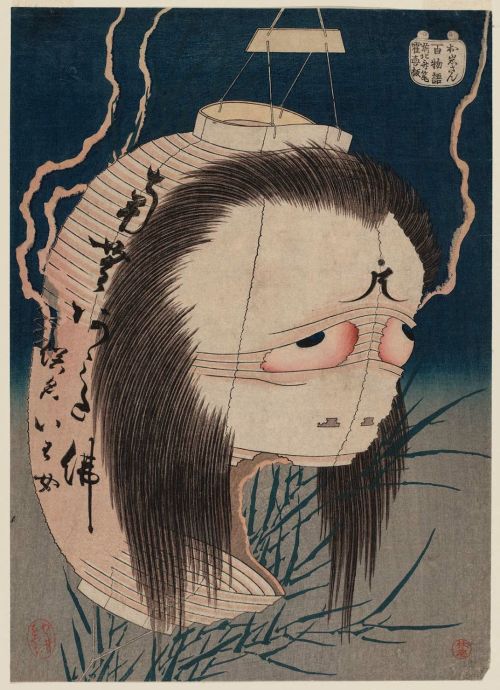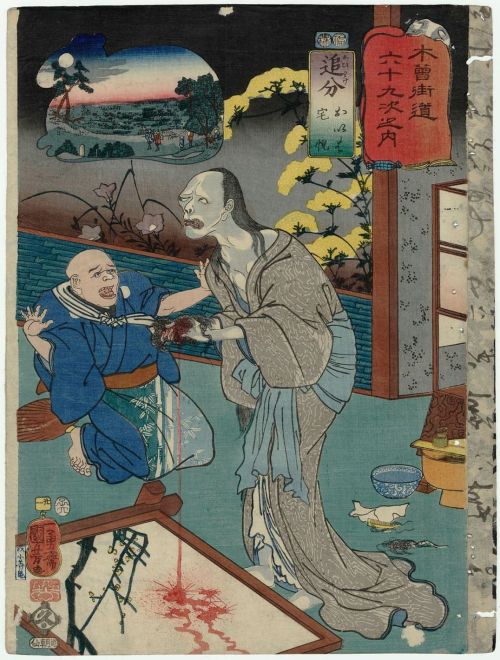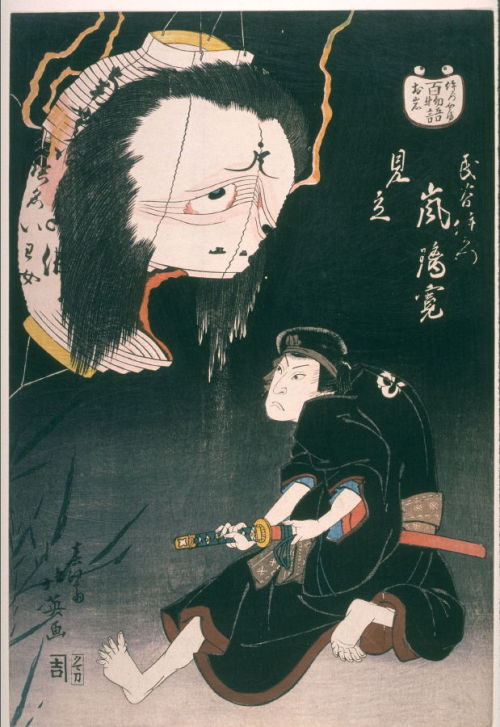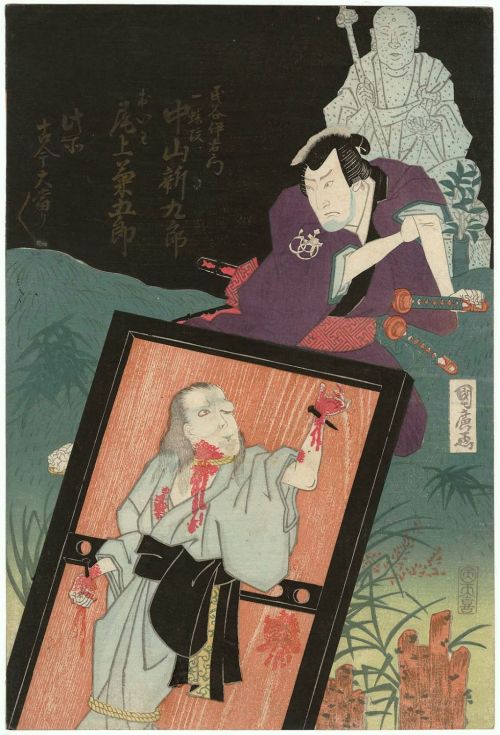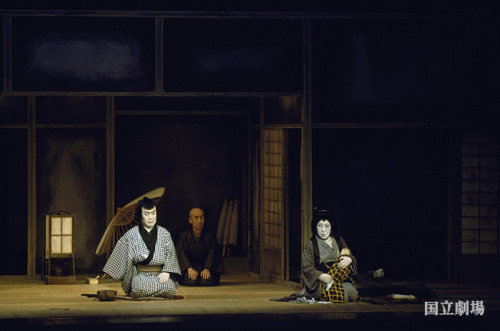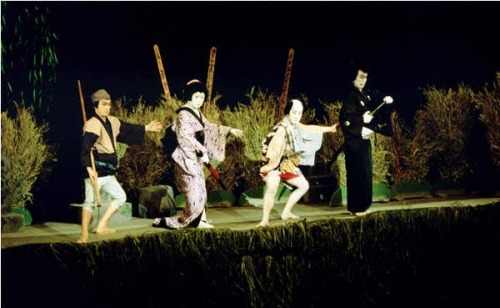arelativenewcomer:Oiwa the Lantern Ghost is one of the better-known works by Katsushika Hokusai,&nbs
arelativenewcomer:Oiwa the Lantern Ghost is one of the better-known works by Katsushika Hokusai, one of the great masters of the ukiyo-e woodblock print. It appeared in the 1830s in the series Hyakumonogatari kaidankai (One hundred ghost stories). It is inspired by one of the most famous Japanese ghost tales which, in turn, constituted the source material for a popular kabuki play, Tōkaidō Yotsuya Kaidan (written by Tsuruya Nanboku IV and staged in 1825; for information and summary, see [here]). 31 October is claimed to be one of the possible dates of Hokusai’s birth; it also happens to be Halloween—so let us have a closer look at the story.One of the play’s focuses is the unhappy marriage of Tamiya Iemon, a man of disputable morals, and Oiwa. The Itō family of Oume, a woman desperately in love with Iemon, poison Oiwa in order to disfigure her and persuade her husband to divorce. Iemon himself tries to press his servant Takuetsu into raping Oiwa, only to gain still firmer grounds for the divorce. Takuetsu, however, is unable to rape Oiwa; he forces her to look into a mirror and makes her aware of the effects of poisoning. The woman intends to visit Oume’s family; as Takeutsu is trying to hinder her departure a brief scuffle begins in the course of which Oiwa accidentally falls on a sword and dies. Another subplot features Kohei, Iemon’s former servant, killed by the latter after being caught stealing medicine from Iemon’s house. Following Iemon’s order, the bodies of Oiwa and Kohei are nailed to two sides of a door which is thrown into a river. Oiwa’s ghost starts to haunt Iemon, making appearances in various situations and settings. Her dead body comes to life to scold Iemon; she pursues him into the mountain hermitage where he struggles to hide and gather his wits; she emerges from a lantern; vines in the hermitage assume the shape of her face. Finally, she makes Iemon fall into the hands of his enemy, Yomoshichi, who ends the protagonist’s life. The play features some famous scenes and elements. One of them is the haircombing (kamisuki) scene, in which Oiwa, in a desperate attempt to make herself presentable before the visit to the Itō family, combs her hair which keep falling out, blood dripping from her head. In the scene where Iemon faces the bodies of Oiwa and Kohei come alive, the toitagaeshi stage trick is used to reveal one actor in two roles using a flipping wooden panel [info]. One of the acts ends with a danmari—a pantomime kata involving several actors [info]. The danmari in question is a sewa-danmari, strictly connected with the plot; the whole scene revolves around a dispute for a desired object and concludes with the actors striking poses (mie).Oiwa is an onryō, a vengeful ghost. Her bitterness and torment keep her bound to this world; unable to find peace, she pursues those who harmed her until they are finally annihilated. Among the actors it is said that working on the play’s adaptation may bring misfortune and disaster upon the participants of the undertaking; it is a custom to visit Oiwa’s grave at the Myogyoji Temple in Tokyo in order to win her over and prevent her from harming the crew (and especially the actor impersonating her).The play can be watched [here]. The beginning and the ending are unfortunately cut, but all the scenes I described are there. What I find the most appealing in this performance is the deep, human manner in which Oiwa’s emotions are conveyed by Utaemon. We do not see much of the ghost Oiwa; the human Oiwa, however, definitely steals the show.The pictures (top to bottom): Oiwa the Lantern Ghost, Katsushika Hokusai, 1831–32 [source]; Oiwa combing her hair, Utagawa Kuniyoshi, 1852 [source]; Oiwa emerging from the lamp to haunt Iemon, Shunbaisai Hokuei, 1832 [source]; the toitagaeshi scene, Ganjōsai Kunihiro, 1826, featuring Nakayama Shinkurō IV as Iemon and Onoe Kikugorō V as Oiwa [source]; the toitagaeshi scene, Matsumoto Koshiro VIII and Nakamura Utaemon VI as Iemon and Oiwa [source]; at Oiwa and Iemon’s house: Matsumoto Koshiro VIII (Iemon), Nakamura Kanzaburo XVII (Oiwa), Bandō Yagoro II (Takuetsu) [source]; the danmari scene [source]. -- source link
Tumblr Blog : arelativenewcomer.tumblr.com
#katsushika hokusai#hokusai#art#ukiyoe#japanese art#kabuki#japanese theatre#oiwa#japanese ghosts#utagawa kuniyoshi#ganjosai kunihiro#shunbaisai hokuei
